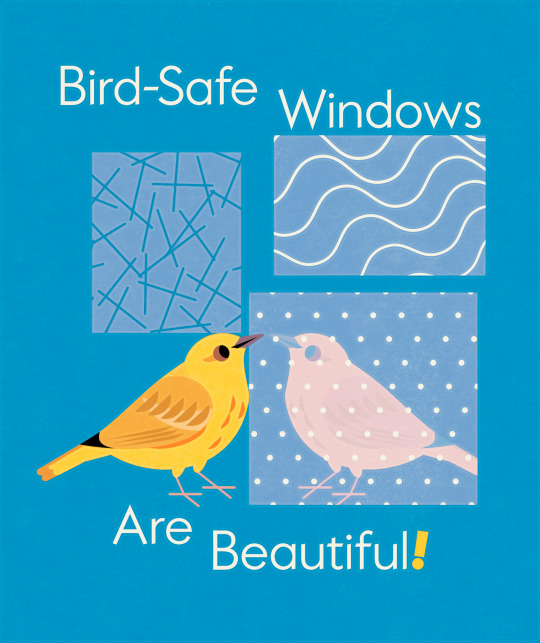#not-warblers
Explore tagged Tumblr posts
Text

Wrenthrush (Guillermo Saborío Vega)
51 notes
·
View notes
Text
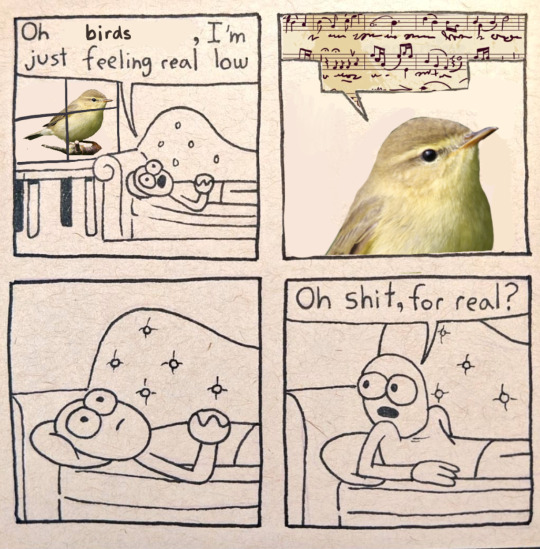
13K notes
·
View notes
Text

a drawing of a canada warbler since it's starting to feel like spring in saskatchewan
#my art#illustration#digital illustration#digital art#bird art#procreate#bird illustration#canada warbler#warbler
5K notes
·
View notes
Text


#lostonyoubabe#sarhoskedi#superkursunaskr#ahududuluvodka#kakaollusut#mayonezli#bokmutluyuzaqq#flowers#ozgurkedi#aesthetic#isvolim#lemon#lemonada media#lemon demon#yellow#yellow warbler#yellow wallpaper#drinks#drink water#food and drink#cold weather#cold drinks#summer#suslucicek#artculture#poets on tumblr#artists on tumblr#landscape#aestehtic#pink aesthetic
5K notes
·
View notes
Text

the warblers are headed south!
my piece for bird collective's warbler collection, you can shop here
2K notes
·
View notes
Note
Is there a bird that can make me happy again
THIS BIRD WILL SOLVE ALL OF YOUR PROBLEMS!!!

Pink-headed Warbler (Cardellina versicolor), family Parulidae, found in Chiapas, Mexico and Guatemala
photograph by danialdschumann

photograph by Francesca Albini

photograph by Forrest Rowland
1K notes
·
View notes
Text
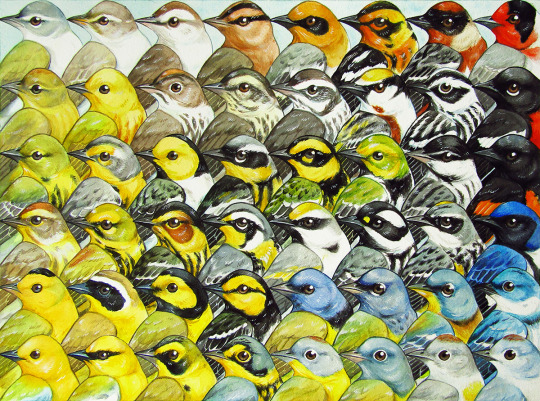
Before They're Gone
A tessellation of warbler species that migrate through North America.
Want more @lekrow? Check out what else is featured here on @artistalley.
This month, Tumblr's Artist Alley is highlighting some of Tumblr's amazing LGBTQIA+ artists for #june on tumblr.
Are you an artist with a store or open commissions? Want more eyes on your work? Submit your art to Artist Alley for the chance to be featured across Tumblr.
9K notes
·
View notes
Text

day 35
today's bird is the american redstart!
- american redstarts flash the bright orange and black patterns on their tails and wings to startle prey out of foliage
- male american redstarts can sometimes have two mates at a time (and therefore two separate territories) up to a quarter mile apart
- they're one of my favorite warblers :0) happy warbler wednesday!
#warbler wednesday baby!#warbler wednesday#passeriformes#american redstart#parulidae#warbler#sunny's favorite birds#artists on tumblr#bird art#birds#ornithology#setophaga
1K notes
·
View notes
Text
It's always good news when a rare native species rebounds from the brink of extinction. The Kirtland's warbler was once down to about two hundred individuals, but with conservation efforts the population is almost to five thousand. This is still a very small number, but it's a heartening change.
The warbler was removed from the U.S. Endangered Species List in 2019. While this may seem like a good thing, it means these birds have lost some of the legal protection that earned them breathing room to recover. It also highlights the very procedural, quantitative way in which government entities try to define whether a species or habitat is "safe" or not. It's not as though once the warbler was off the list its problem all disappeared. Plus there are many species that face extinction that have never been listed simply because the data hasn't been sufficient--or even existent--to prove the threat.
And it also reflects the reductionist view toward science that is still all too common. While restoration ecologists and other conservationists are well aware of the interconnectivity of an ecosystem and how it is more than the sum of its parts, the idea that a single species is endangered in isolation ignores the complex interplay between species and habitat, and how habitat loss is the single biggest cause of endangerment and extinction across the board.
So while we celebrate rising numbers of Kirtland's warblers, we also need to be focused on protecting and restoring the pine forests of the upper Midwest that they prefer in summer, and their wintering grounds in the Bahamas. Moreover, we need to appreciate the need of all the beings in these habitats to have their homes and feeding grounds protected in total, not just a single species here and there. The warbler is just a starting point, and its continued success relies on the health of the intricate systems of which it is a part.
#birds#warblers#Kirtland's warbler#endangered species#extinction#birdblr#nature#wildlife#animals#ecology#environment#conservation#science#scicomm#birding#habitat restoration#restoration ecology#good news#positive
757 notes
·
View notes
Text
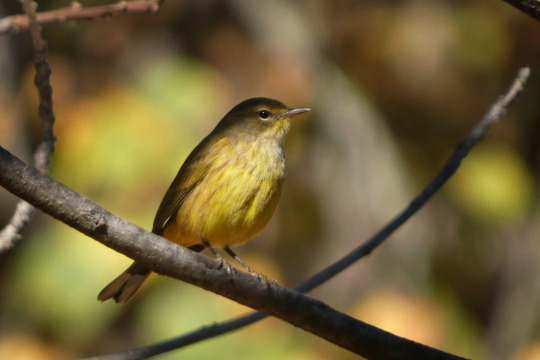




Someone sign this bird to a modeling contract
Palm Warbler (Setophaga palmarum)
October 25, 2024
Southeastern Pennsylvania
#bird#birds#photographers on tumblr#palm warbler#Setophaga palmarum#birdblr#birb#birbs#ornithology#birblr#nature#animals#wildlife photography#fall migration
681 notes
·
View notes
Text
Genus: Granatellus

Red-breasted Chat (type species) by John Cahill
The three species of this genus look remarkably similar and can be hard to tell apart by pictures alone, though the Grey-throated Chat is less dark than its two sister species. Thankfully their range is the help here, with Rose-breasted Chat being a South American bird and Red-breasted Chat being a Mexican bird. Grey-throated spans some of the gap between the two.
Their genus is referring to the color 'garnet', which is easy to understand given the brilliant red all three share along their throat and/or breast. Their new family, Cardinalidae, is often known for brilliantly colored birds- reds, blues, and yellows. Some more common North American redheads include Northern Cardinal, Rose-breasted Grosbeak, and Scarlet Tanager.
39 notes
·
View notes
Text


It was never a common species, the blue-grey warbler that locals called the jack pine bird. A belated discovery among American birds, it was undescribed by science until the mid 19th century—and then, known only on the basis of a single specimen. The bird's wintering grounds in the Caribbean would eventually fulfill the demands of collectors and museums, but the intricacies of its lifecycle remained a mystery for decades, the first nest only found in 1903. As the already-rare bird became rarer, people could only guess at why. There were just so few birds to look for, their breeding habitat inscrutable amidst the dense, impassable woodland of their Midwestern home. The one clue was the most apparent thing about the bird: its affinity with the jack pine (Pinus banksiana).
Over time, more nests were found—not in the eponymous trees, as might be expected for a songbird, but on the ground at their feet. Data points converged, leading to the realization that not only did the bird nest almost exclusively in proximity to the scrubby pines, but only utilized trees that fell within a specific range: new growth, between five and fifteen feet tall, with branches that swept shelteringly close to the ground. Subsequently, it would be noticed that the greatest volume of specimen collection for the bird had corresponded with years in which historically significant wildfires had impacted the Midwest—fires that, for decades afterwards, had been staunchly suppressed. The pieces fell into place, like jack pine seeds, whose cones open only under the heat of a blaze.
With the bird's total population having dwindled to the low hundreds, a program of prescribed burns, clearcutting, and replanting was instituted, with many acres of land purchased and devoted to the preservation and maintenance of suitable breeding habitat. Concurrently, efforts were made to protect the vulnerable bird against brood parasitism by the brown-headed cowbird.
When the first federal list of protected species was put forward in 1966, the name of the small grey warbler was inscribed beside birds such as the Kauai ʻōʻō and the Dusky Seaside Sparrow.
The ʻōʻō, last of the genus Moho, would be removed from the list in 2023 due to extinction, after thirty-six years without a sighting.
The endling Dusky Seaside Sparrow, a male named Orange Band, would die of old age in captivity in 1987, with his species being delisted three years later.
in 2019, fifty-two years after the creation of the Endangered Species Protection Act, the name of Kirtland's warbler, too, was removed from the list: it had been determined that, with a population now numbering nearly 5000, the jack pine bird could be considered safely stable.
Conservationists continue to work to preserve the breeding habitat of Kirtland's Warbler in the midwestern US, as well as its winter roosts in the Bahamas and neighboring islands (though selective logging has replaced actual burning in recent years, due to the dangers posed by unpredictable fires). It's the kind of effort that it takes to undo the damage we've caused to the planet and its creatures—the kind of hope that we need, to not give up on them, or on ourselves.
-
The title of this piece is Prescribed Burn (Kirtland's Warbler). It is traditional gouache on 18x24" watercolor paper, and is part of my series Conservation Pieces, which focuses on efforts made to save critically endangered birds from extinction.
#kirtland's warbler#conservation#bird art#extinction stories#bird extinction#endangered species#series: conservation pieces
1K notes
·
View notes
Text
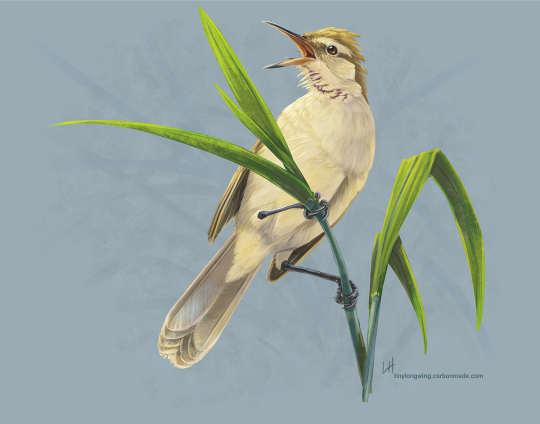
Ga'ga karisu, Saipan Reed-Warbler (Acrocephalus hiwae) is a critically endangered species found in the Northern Mariana Islands. Though few remain due to habitat loss, they fill the air with their rich melodic songs in those places where they can still hold on.
Their closest relative, the Nightingale Reed-Warbler of Guam, is extinct due to habitat loss and the invasive brown tree snake.
#endangered species#endangered birds#scientific illustration#birblr#saipan reed-warbler#reed-warbler#nightingale reed-warbler#northern mariana islands#pacific islands#artists on tumblr
3K notes
·
View notes
Text








Cache River Wetlands, Illinois
#cypress swamps#swamps#wetlands#prothonotary warbler#cypresses#rivers#illinois#southern illinois#my photos#iiwwtitikofv
906 notes
·
View notes
Text


There's a long journey, to wherever you're heading, and a short one, to my heart, where you already arrived.
Fitis (willow warbler) auf dem Scharrenberg, Degerloch.
#fitis#willow warbler#birds#bird watching#birding#urban birding#birblr#mosquitero musical#nature#wildlife#ornithology#stuttgart#germany#photographers on tumblr#my photography#wildlife photography#bird photography
448 notes
·
View notes
